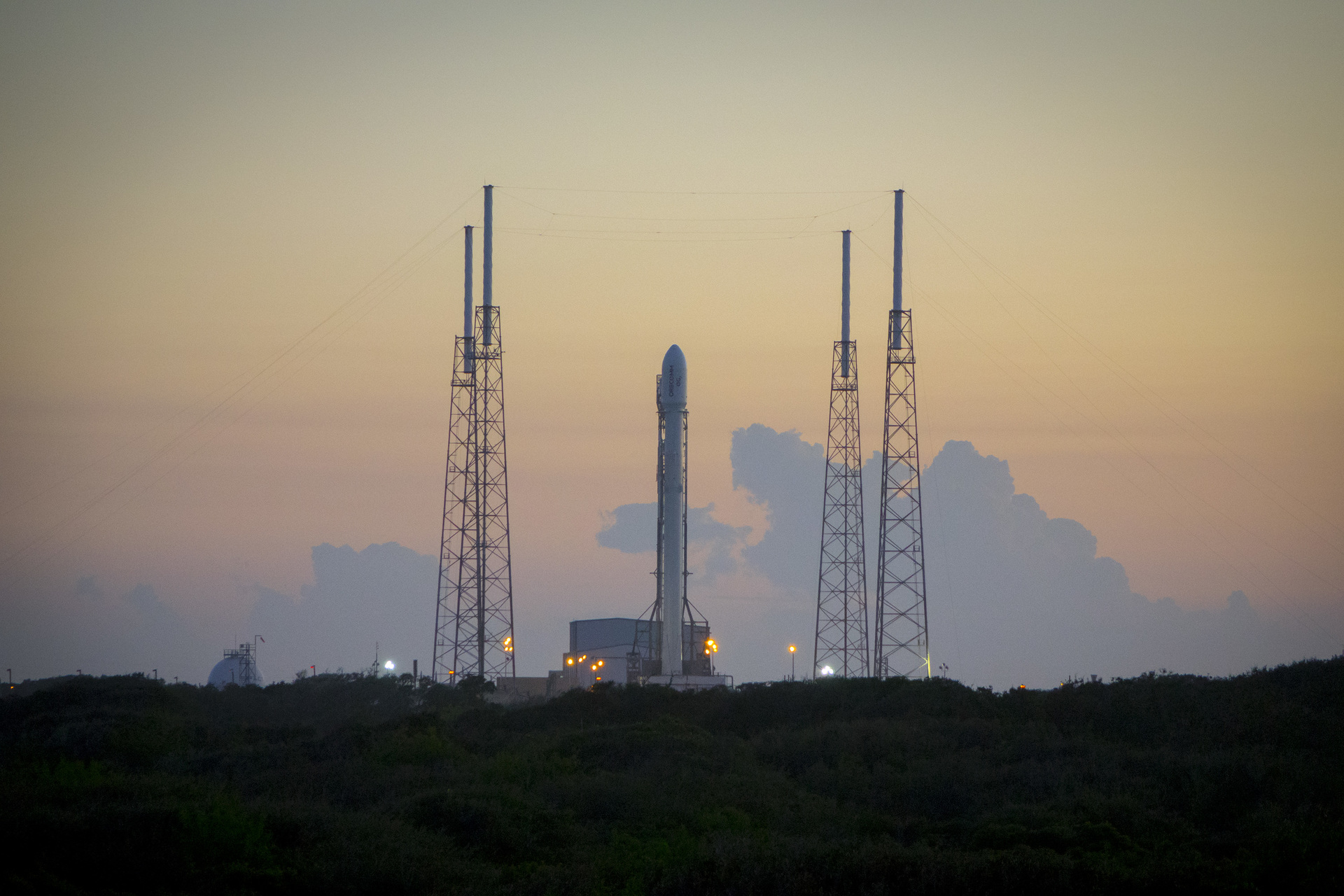On February 24, SpaceX will launch the Falcon 9 and for the fourth time will try to land the return first stage on the barge

Falcon 9 rocket is preparing for static tests on the launch complex, SpaceX .
The SpaceX company, led by Ilona Mask, does not abandon any attempts to adjust the process of landing its returnable first stage of the Falcon-9 launch vehicle onto an autonomous offshore platform. On February 24, the Falcon 9 launch vehicle will be launched with the SES-9 satellite, which is owned by the Swiss telecommunications company SES.SA. This is the second launch of the Falcon 9 rocket in 2016.
Now the company is conducting an extended series of tests and pre-flight preparation of the rocket. If on the 24th day the launch is canceled (for example, due to weather conditions), they will try to launch the rocket again the next day, February 25th. The window opens at 18:45 local time. The rocket will be launched from Cape Canaveral - it was from there that the Falcon 9 started in December 21st, when the company managed to successfully land the first step on the ground.
The satellite will be raised to a rather high orbit at 35,000 kilometers above the equator. After the cargo has gone into space, the first step will again be tried to return to Earth, and land on the sea barge. This will be the fourth attempt by the company to land a returnable step on an autonomous seagoing vessel. The last but one attempt was almost perfect, but at the end one of the rocket supports failed, which broke and the stage fell on the barge, sustaining significant damage. The barge itself is located in one of the sectors in the Atlantic Ocean.
')
Earlier, Ilon Musk announced his intention to make some changes to the original design of the Falcon 9 launch vehicle. These changes will be made on the basis of data on testing the first stage, which returned to Earth in December . This was reported by the company's president Gwyn Shotwell. Unfortunately, Shotwell did not report any specific changes, but said that after adding all the changes, the rocket would become even stronger and more stable. Now the modification Falcon-9FT (Falcon-9 v1.2) will be put into orbit.
Let me remind you that for SpaceX it is vitally important to learn to land the return stage on the sea platform, since this allows you to save fuel during landing. In turn, this means that heavier loads at lower cost can be put into orbit. And the reuse of steps, according to the company's specialists, significantly reduces the cost of launching and the cost of putting a kilogram of payload into orbit.
Source: https://habr.com/ru/post/390215/
All Articles